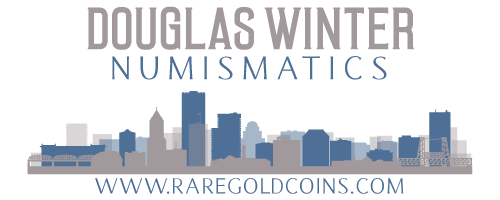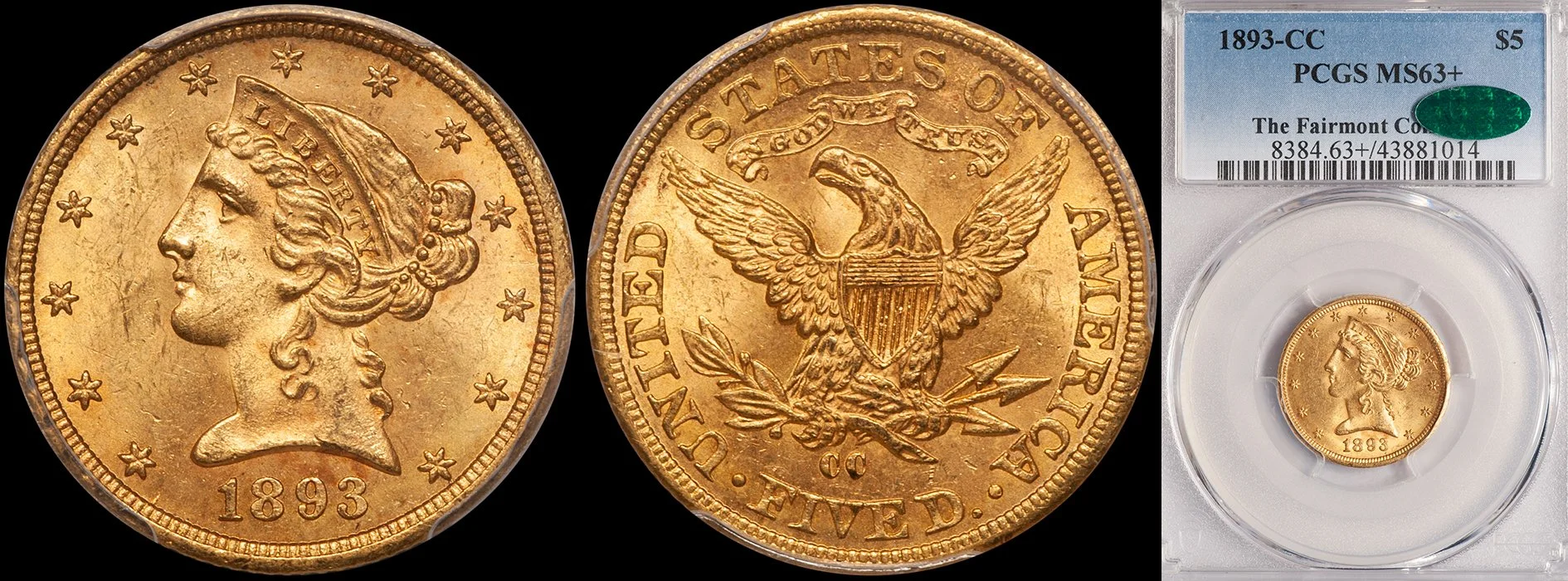If I Collected Coins What Would I Collect?
/I often (OK, not “often” but at least “occasionally...”) get asked the question “what kind of coins do you collect?” I don’t currently collect coins because I think that, as a dealer, being a collector is an inherent conflict; I don’t ever want to have an internal debate with myself about whether or not I should sell a coin that I buy. But I do have a pretty good idea about what I would collect if I were actually collecting. When I was younger and not yet a full-time dealer, my first love was Colonial coinage. I specialized in Connecticut coinage and specifically collected 1787 Draped Bust Left coppers. In retrospect, this was pretty ambitious for a ten year old kid. There are something like 350 varieties of 1787 DBL coppers and not only was I collecting them by variety, I was typically doing it without a reference guide as I had memorized many of the important varieties.
Connecticut coppers appealed to me for a number of reasons. First off, they were cheap. My budget was pretty small back in the day and for $25 to $75 per coin, I could buy very presentable examples (the kind of coins that are worth $500 or so each today). Secondly, the age and history of these coins appealed to me. I was always a history buff and the Colonial era was of particular interest to me. Thirdly, I grew up in New York City and there were some friendly, knowledgeable dealers in the area such as Richard Picker, David Sonderman, Bob Vlack and Jim King. The fact that the coins were readily available for trustworthy local sources appealed to me. Finally, I liked the crudeness of the designs and the complexity of the series.
After my Connecticut obsession, I moved onto Liberty Seated quarters. I chose this series for one really glaring reason: the coins seemed hugely undervalued to me. Obviously, I couldn’t afford Gem coins, so I tended to focus on choice, original pieces in the Fine to Extremely Fine range. I never did finish the set (I could never afford the rare Carson City issues from 1870 to 1873) but I was able to buy some pretty awesome coins at what seemed like pretty reasonable prices.
So, using my experiences from the collecting days of yore, how would they apply to the market of today? To answer the “what would I collect” question let me start by deducing what I wouldn’t collect. I know that I would avoid coins made during the 20th century. For whatever reason, 20th century coins have just never really appealed to me (with the exception of Saints but that is a set that I could never afford to collect in the way that I want to). I am pretty sure that I would also avoid collecting Proof coins. I like very low mintage Proofs struck prior to 1880 but, for the most part, I like coins that were made to circulate. In the same vein, I think I would focus on coins that were in lightly circulated grades as opposed to high end Uncirculated coins. I like a Gem coin as much as the next guy but there is something about an evenly worn, dirty EF45 to AU55 coin that really appeals to me. I know I would also focus on an era of history that was appealing to me. I also know that after all these years of focusing on gold coins, I’m going to have a pretty hard time not specializing in some sort of gold coinage.
So, at this point we are looking at business strike gold coins from the 19th century in circulated grades as the parameter of WWDC (What Would Doug Collect). For a variety of reasons, I have always been partial to coins struck prior to the Civil War, especially those produced from 1834 through the mid-to-late 1840’s. I don’t really have any preferences as to coin size, so I wouldn’t naturally be attracted to quarter eagles as opposed to half eagles or eagles. I know you are assuming that I’d select branch mint coins over Philadelphia and this is probably true although I do find the Philadelphia coins from this era to be very interesting and a really good value.
As someone who has long been an advocate of specializing and having a fairly narrow focus for a collection I’m going to actually listen to myself. I would also want to choose a series that doesn’t have any very expensive coins that I know I could never buy. I’d want coins that were scarce to rare but not impossible to find. And I’d want to be in a series where the coins were actually decent looking.
Given all of these parameters, I think that I would be a collector of No Motto New Orleans half eagles and eagles. I would want to collect both denominations and I’d try to have choice, original EF and AU coins that were evenly matched.
But I think I would also have a secondary, “cheap coin” collection as well. There would be points in time when I might not have the money for a good New Orleans gold coin or couldn’t find anything but I still had an itchy trigger finger and wanted to buy something. During these times, I’d focus on Liberty Seated half dollars (both Philadelphia and New Orleans) from the 1839-1852 era in EF and AU grades (with the occasional MS62 or MS63 thrown in for good measure).
To those of you who actually do collect New Orleans half eagles and eagles: don’t worry, I’m not going to suddenly become your competitor. But if these are your series of choice, give yourself a pat on the back and smugly tell yourself that you’ve made a choice that meets with my total approval!









